BY: ALEX PIERCE-FELDMEYER
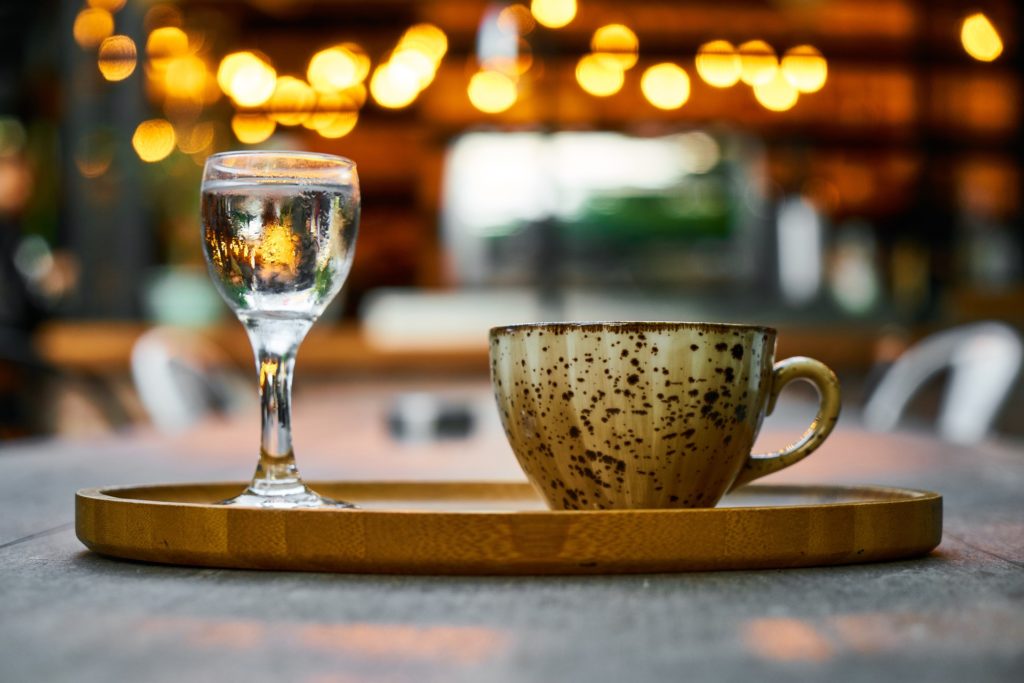
“Coffee should be black as hell, strong as death, and sweet as love.1” -Turkish proverb
Turkish coffee is not just a drink, it is an experience. It is one of the most ancient traditions and therefore Turkey may be the first to collectively incorporate coffee into its culture. The prevalence of Turkish coffeehouses began during the height of the Ottoman Empire, with its rich history having nothing to do with new latte flavors and everything to do with politics.
Traveling caravans of tradesmen and artisans from Istanbul to Mecca and back are suggested to be the groups that popularized coffee, but to fully understand and appreciate this dark, unfiltered coffee, we must dive deeper into its weighty role in Turkish culture.
Turkish Coffee History
The first coffeehouse in the Ottoman Empire was likely between 1554-1555, during peak Ottoman power2. It was located centrally, close to trading and business exchanges, which invited visitors of all social classes. This diverse exposure planted a seed for all future coffeehouses. Turkish coffeehouses were places to socialize, read, and support the arts. Additionally, political discourse became a common practice, eventually causing unrest.
As the coffeehouse culture proliferated, subcultures were born in different coffeehouses due to their visitors and social activities.
“Neighborhood” coffeehouses were linked to religion, often located next to Mosques. People gathered for breaks, to read and to play games3.
Guild coffeehouses, frequented by Artisans, were organized by the guild system. A guild system was a hierarchy of sorts within the Ottoman State, consisting of four levels as “errand boy,” “apprentice,” “qualified workman,” and “master.4” Guildsmen would meet to network, socialize and discuss politics.
Coffeehouse discussions were believed to have fostered conservative support in the wake of a modernizing Ottoman political climate between 1789-1807. “Opposition to innovation” became the theme of this local coffeehouse and even provoked raids and demolition circa 1808-18393.
Minstrel coffeehouses were more about art. Local as well as traveling poets and musicians performed songs and ballads. Urban and rural people connected and communicated, often discussing current events. These places clustered in commercial centers, sharing a cultural base with tradesmen and artisans3.
Semaf coffeehouses were born from the neighborhood firefighters. The so-called ‘fire-brigade coffeehouses’ were a social area for the fire-brigade, but eventually a sub-culture of these houses became a coffeehouse that remained open during the month of Ramadan all night. Bands would play and they would stay open until the pre-dawn meal3.
As time passed, coffeehouses reflected the growth and changing values of the people at that time. The culture was struggling with changing traditional values and these houses grew to symbolize the growing conflicts between conservativism and the modernizing empire3.
“…in Coffeehouses. It was a centripetal force that drew people from different ethnic backgrounds and cultures into conversation3.”
This unrest stemmed from the government’s condemning socialization, which was not considered one of the “three basic central needs of the society: home, business or church.3” The diversity (mixing social classes) of consumers was seen as a threat to central power which eventually spurned prohibition in 1633.3
“It was an important note in history that this prohibition symbolized—it sent a message that innovation was heresy3”
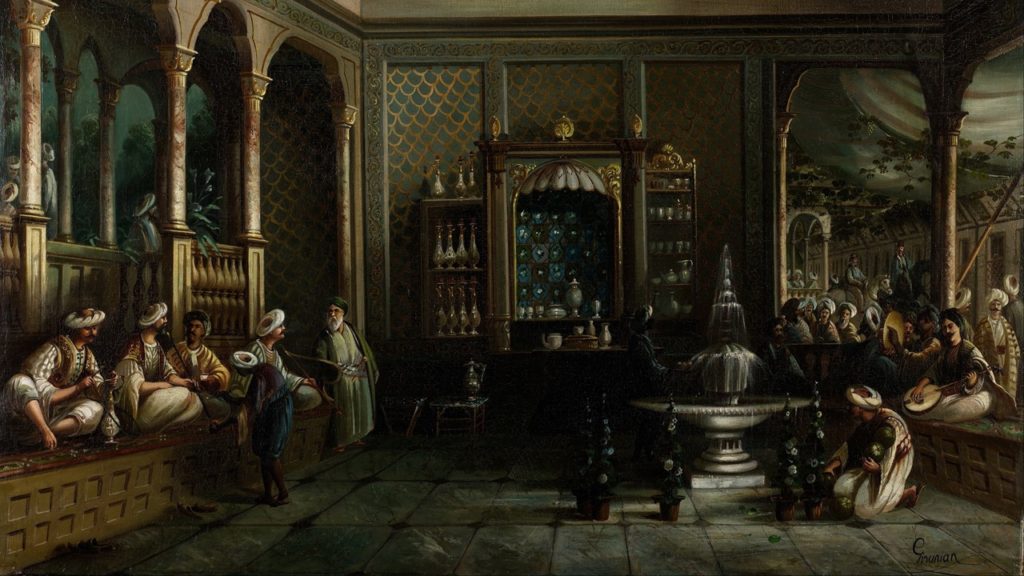
However, with the death of Sultan Murad IV in 1640, prohibition ended.
“Trading coffee was a livelihood for many people, contributing to the economy and tax income. It did not make economic sense to keep it prohibited3 ”
The Turkish coffeehouses weren’t just places locals got their daily dose of caffeine – it seems that meeting for coffee was home to provocative socialization, play, art, and discussion. What a revelation! It continues to fascinate me how much food and beverage consumption weaves itself into culture, wholly affecting present-day civilization.

Perhaps with a deeply rooted history revolving around Turkish coffee, traditions are still strongly practiced today
You must brew before you say “I do”
Another interesting tradition involving Turkish coffee is the marriage proposal. Several variations of this tradition exist.
A bride traditionally serves coffee to her potential groom and his parents to .6 It has been suggested that upon making the coffee, if she leaves the groom’s coffee bitter it was a message that she was unhappy with her potential partner.1
Another version of this tradition was verified by a Turkish friend:
When the potential groom and parents are introduced to the bride-to-be’s parents, it is tradition that the bride make Turkish coffee, putting sugar in everyone’s cup except the groom’s, in which the sugar is substituted with salt. (My friend even added black pepper!) The expectation is that the groom finish the cup of coffee without noticeable aversion, symbolizing his manliness.7
Another claim—perhaps the best of all—was that a woman was even allowed to divorce a husband if he didn’t provide her with a requested daily amount of coffee.1
Telling fortunes with Turkish coffee8,9
Not only can you predict the gentlemanliness of your male suitor, but Turkish coffee grounds are used to tell fortunes too… Apparently, there exists an academic term for such practice, ‘tassography.’
Upon savoring your last drop of coffee, you are to ‘swirl’ your cup and turn it upside down. Once you flip it back up, patterns form from the grounds appear on the side of the “fincan” to create images for which your fortune comes from.
There are many that believe there are true methods to discerning the symbols left by the thick grounds but of course it is also customary to provide cheeky insight among friends.
General Rules:
- You shouldn’t interpret your own cup
- You don’t give the same cup to a different reader to double check the given reading. Have in mind that most of the professionals perform “whole impression” and not just cup reading symbols.
- Turkish cup fortune telling always starts from the cup’s handle. You move from right to left if the person is right-handed or left to right for left-handed.8
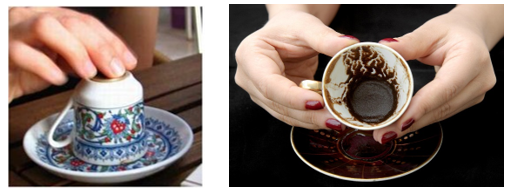 Image source for photo on left and photo on right
Image source for photo on left and photo on right
After relishing Turkish coffee’s rich history and strong tradition, I wanted to learn how to make it and experience it myself
There is a detailed step-by-step process for creating your own Turkish coffee. See this one borrowed from FoolproofLiving5
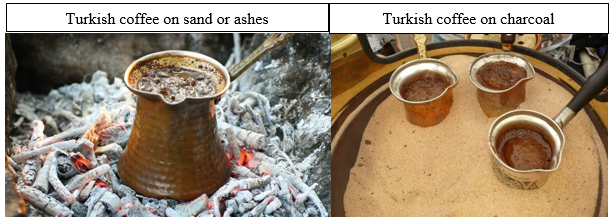 Image source for photo on left and right
Image source for photo on left and right
Modern Turkish coffee
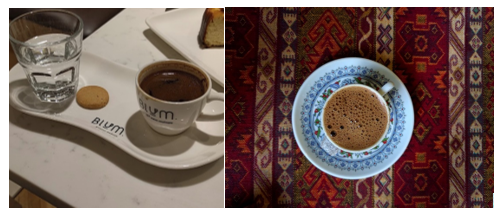 Image source for photo on left and right
Image source for photo on left and right
Turkish coffee is often consumed with Turkish Delight, a gelatinous sweet confection, with many inclusions like pistachios, hazelnuts and walnuts. Flavors can vary, including floral and fruity offerings.
With the obvious difficulty of actually getting to Turkey, I luckily found a local Turkish Coffee pop-up out of Cincinnati, OH. Rüya was born from a project meant to foster community, which is particularly fitting, since this tradition did exactly that over centuries! The pop-up I eventually attended was hosted by 1215 Wine Bar & Coffee Lab in downtown Cincinnati. Immediately upon walking into the shop, I noticed the stove set up with the appropriate “cezve” pots, sat down at the bar and promptly ordered my Turkish coffee with medium sugar.
It was served in a traditional “fincan” and was much smaller than I anticipated…but this was good as this cup was much stronger than expected as well! This is due to the lack of filtration. The grounds and all are in that cup. You can also see the proper layer of foam atop the small cup, indicating a very skilled Turkish coffee brewer.
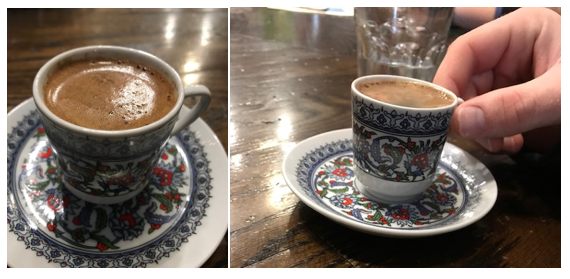
Once I reached the near bottom of my cup and came upon the grounds, I knew the next step. It was fortune telling time.
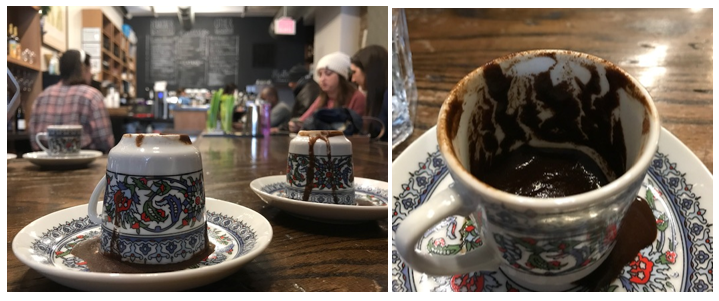
To make a long fortune short, she knows I worry too much! I need to let some things go and I should have something exciting in June and July! Stay tuned! My future looks bright!
If you live in the area (or not) follow Ruya for more exciting pop-ups in the future. You will not want to miss out on your opportunity to get a glimpse into your future, all while getting your daily caffeine fix and experiencing a tradition that is as ancient as the Ottoman Empire. See you there!
“I feel like the soil of different countries across the world comes to me when I’m drinking coffee10“
References
- https://www.perfectdailygrind.com/2015/09/turkish-coffee-a-story-of-mystery-war-romance-empire/
- (https://www.britannica.com/place/Ottoman-Empire/The-peak-of-Ottoman-power-1481-1566
- http://www.turkishcoffee.us/articles/history/ottoman-empire-era/
- https://www.ukessays.com/essays/history/akhism-guild-system-in-the-ottoman-empire.php)
- https://foolproofliving.com/how-to-make-turkish-coffee/).
- https://hometurkey.com/en/attractions/turkish-coffee
- https://mvslim.com/turkeys-coffee-culture-challenge-groom/
- http://www.turkishstylegroundcoffee.com/turkish-coffee-reading/
- https://ozlemsturkishtable.com/2013/06/deliciously-frothy-turkish-coffeeturk-kahvesi-more-than-a-drink/?_sm_au_=iVV0LP8WQdpqMFnN
- https://www.worldbulletin.net/art-culture/turkey-growing-the-love-of-coffee-with-its-festival-h206130.html
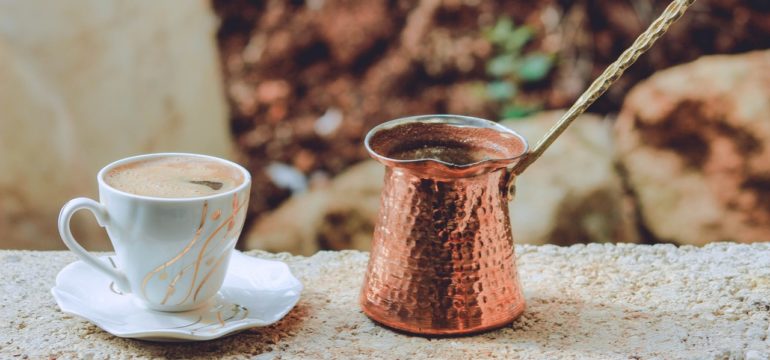
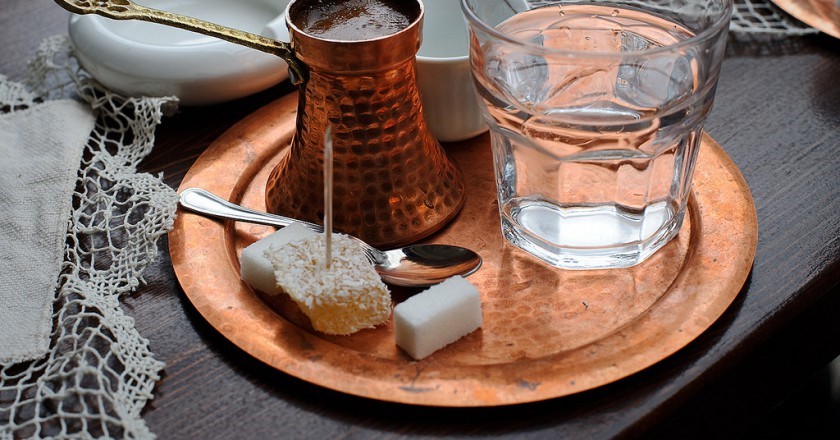

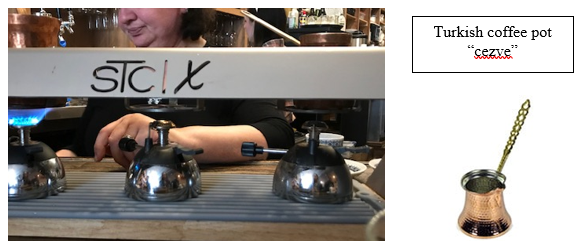





Hey Alex, I loved how much detail you provide in your post about something from my culture. I also want to add something interesting about coffee. Turkish people do not like drinking coffee if they are hungry, it is usually served after meals. So the word for “breakfast” in Turkish is related to coffee. The name “kahvalti/kahve+alti” in Turkish for “breakfast” means “under(alti) the coffee(kahve)”, so it literally means that the food sits under the coffee, so you eat breakfast so that you can have a cup of coffee after it.
Thank you Hacer! That is fascinating! I wish I could have included that!